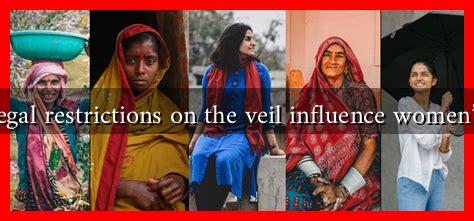-
Table of Contents
How Do Legal Restrictions on the Veil Influence Women’s Choices?
The veil, a significant cultural and religious symbol for many women around the world, has become a focal point of legal and social debate in various countries. Legal restrictions on wearing the veil, particularly in Western nations, have profound implications for women’s choices, identity, and autonomy. This article explores how these restrictions shape women’s lives, the rationale behind such laws, and the broader societal impacts.
The Veil: A Symbol of Identity and Faith
The veil, whether in the form of a hijab, niqab, or burqa, is often worn by Muslim women as an expression of their faith and cultural identity. For many, it represents modesty, spirituality, and a connection to their heritage. However, the perception of the veil varies significantly across different societies:
- In some cultures: The veil is embraced as a personal choice and a symbol of empowerment.
- In others: It is viewed as a sign of oppression, leading to calls for legal restrictions.
Legal Restrictions: A Global Overview
Countries such as France, Belgium, and the Netherlands have implemented laws that restrict or ban the wearing of veils in public spaces. These legal frameworks often cite reasons such as:
- Secularism: The belief that religion should not influence public life.
- Security concerns: Fears that veils may hinder identification and pose security risks.
- Gender equality: The argument that banning the veil promotes women’s liberation.
For instance, France’s 2010 law prohibiting the wearing of full-face veils in public was justified on the grounds of promoting secularism and gender equality. However, this has sparked significant debate about the implications for women’s rights and freedoms.
Impact on Women’s Choices
Legal restrictions on the veil can significantly influence women’s choices in various ways:
- Forced Decisions: Women may feel compelled to choose between their religious beliefs and societal acceptance. In some cases, they may opt to remove their veils to avoid discrimination or legal repercussions.
- Social Stigmatization: Women who continue to wear the veil may face social ostracism, harassment, or even violence, leading to a climate of fear and anxiety.
- Identity Crisis: Legal restrictions can create internal conflict for women who identify strongly with their religious practices, leading to feelings of alienation and loss of identity.
Case Studies: Real-Life Implications
Several case studies illustrate the impact of legal restrictions on women’s choices regarding the veil:
- France: A study conducted by the Pew Research Center found that 62% of Muslim women in France reported feeling pressured to conform to societal norms regarding dress, leading many to abandon their veils.
- Belgium: In 2011, a Belgian woman was fined for wearing a niqab in public, highlighting the legal consequences that can arise from personal choices.
- Turkey: In contrast, Turkey has seen a gradual lifting of restrictions on the hijab in public institutions, allowing women to reclaim their right to wear the veil without fear of repercussion.
The Broader Societal Impact
Legal restrictions on the veil not only affect individual women but also have broader societal implications:
- Polarization: Such laws can deepen societal divides between different cultural and religious groups, fostering an environment of intolerance.
- Human Rights Concerns: Organizations like Amnesty International argue that these restrictions violate women’s rights to freedom of expression and religion.
- Impact on Integration: Bans on the veil can hinder the integration of Muslim women into society, as they may feel marginalized and excluded.
Conclusion
Legal restrictions on the veil significantly influence women’s choices, often forcing them into difficult positions regarding their identity and beliefs. While proponents argue that such laws promote secularism and gender equality, the reality is that they can lead to social stigmatization, forced decisions, and a loss of personal autonomy. As societies continue to grapple with issues of cultural identity and religious expression, it is crucial to consider the voices of women affected by these laws. Ultimately, fostering an environment of understanding and respect for individual choices may be the key to bridging divides and promoting true equality.
For further reading on this topic, you can explore resources from Amnesty International and the Pew Research Center.

